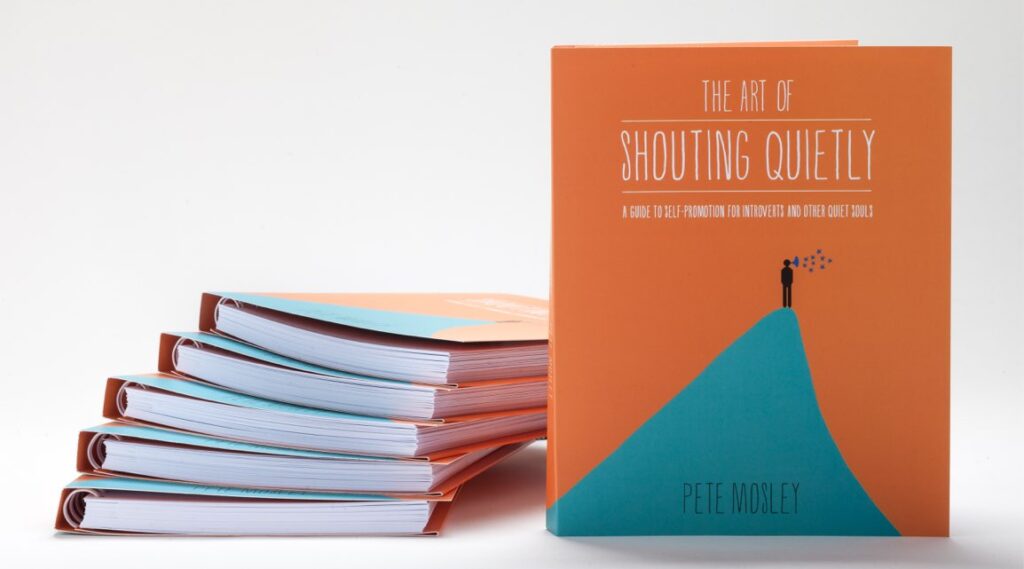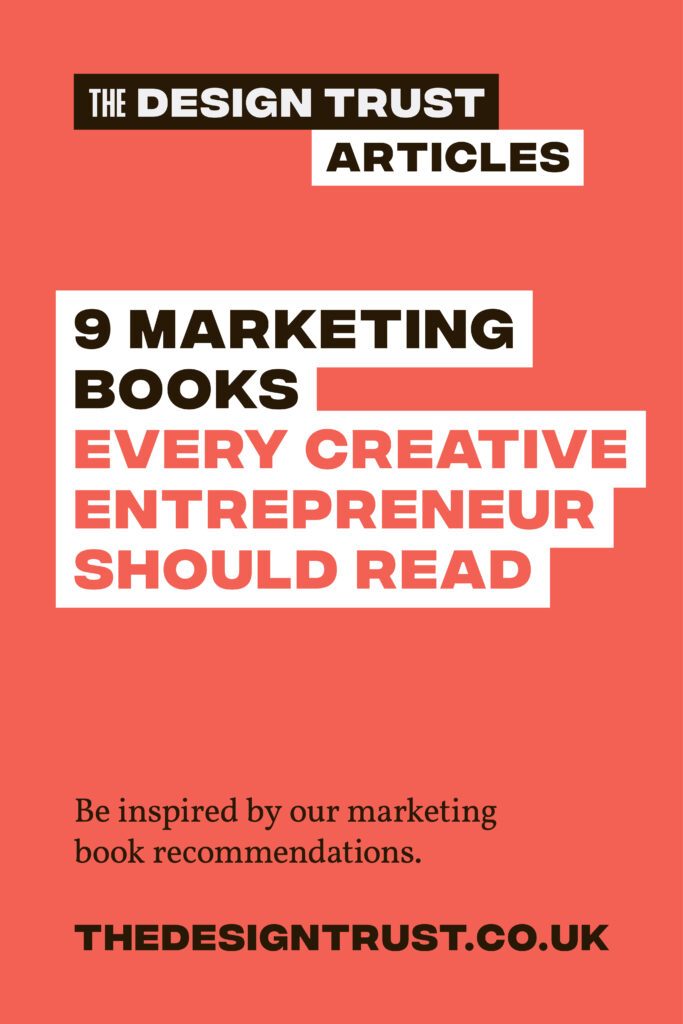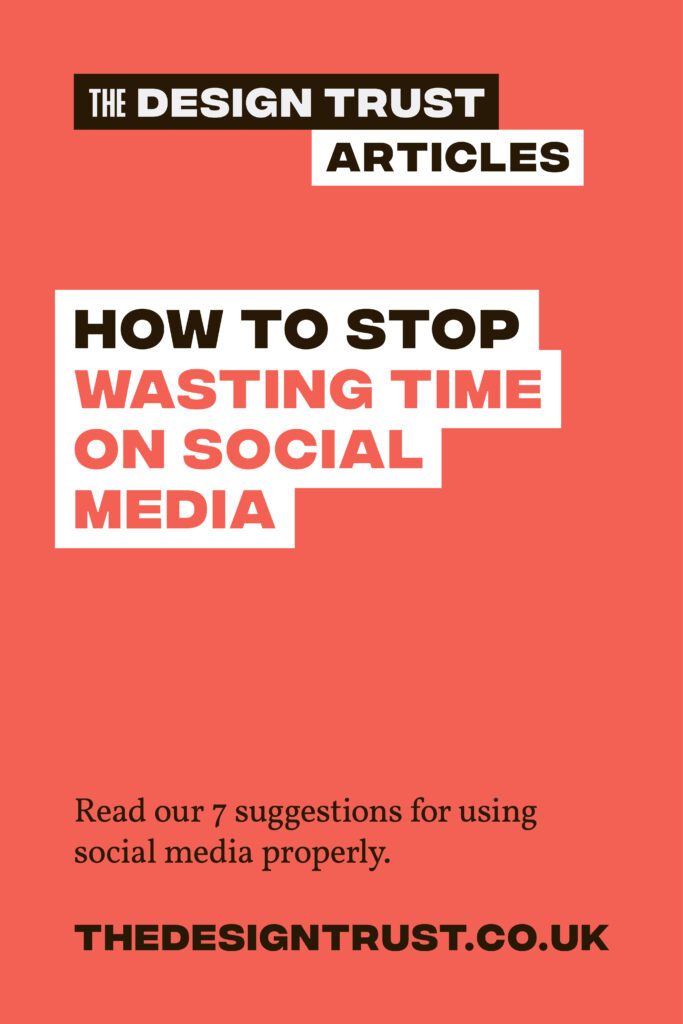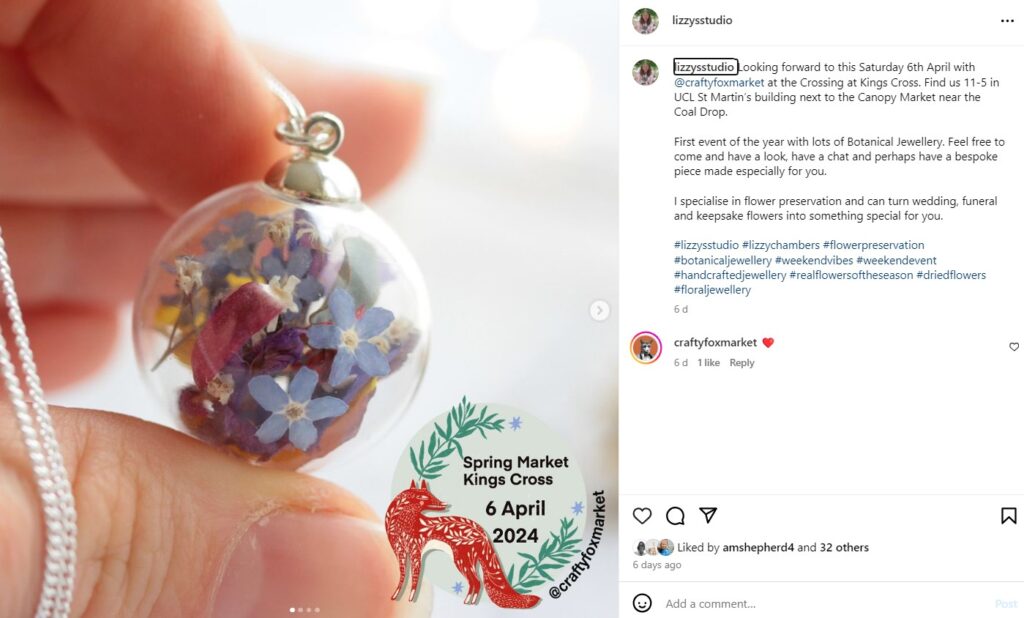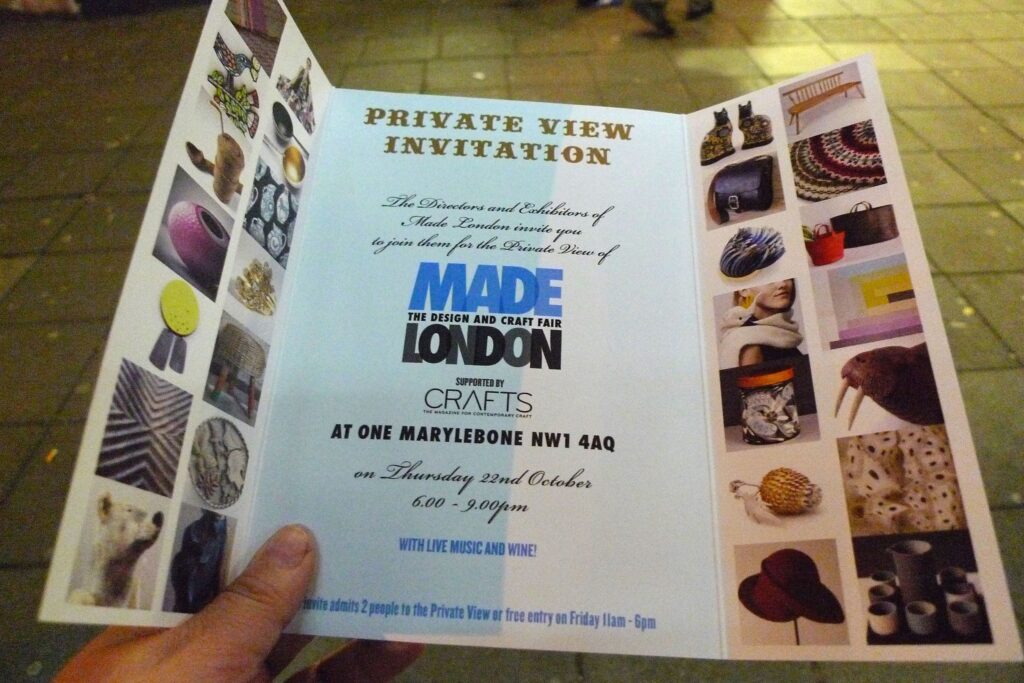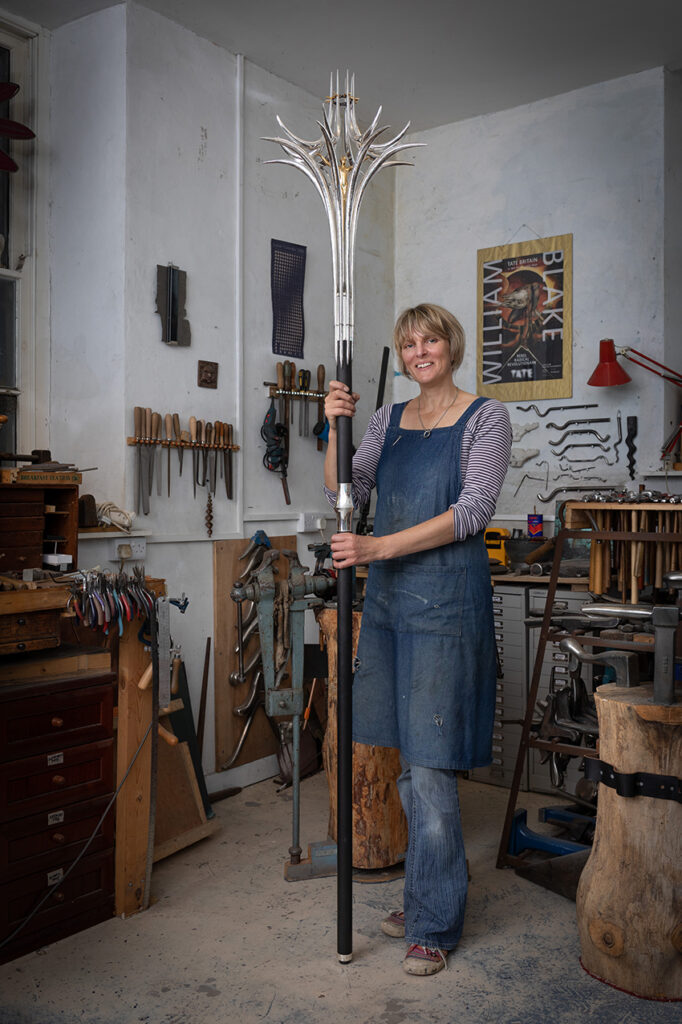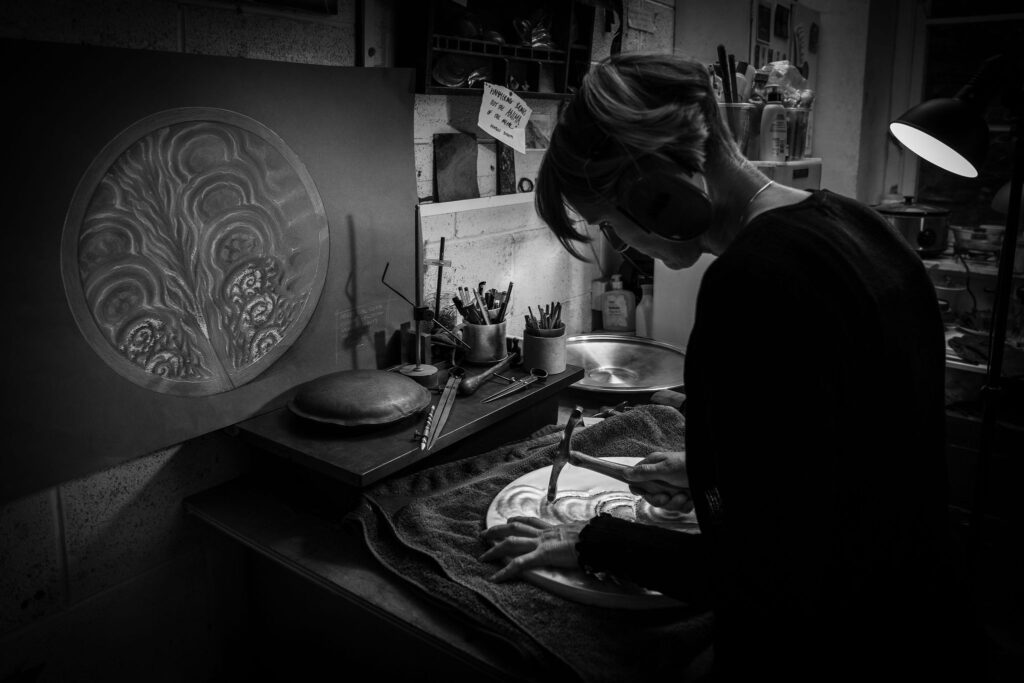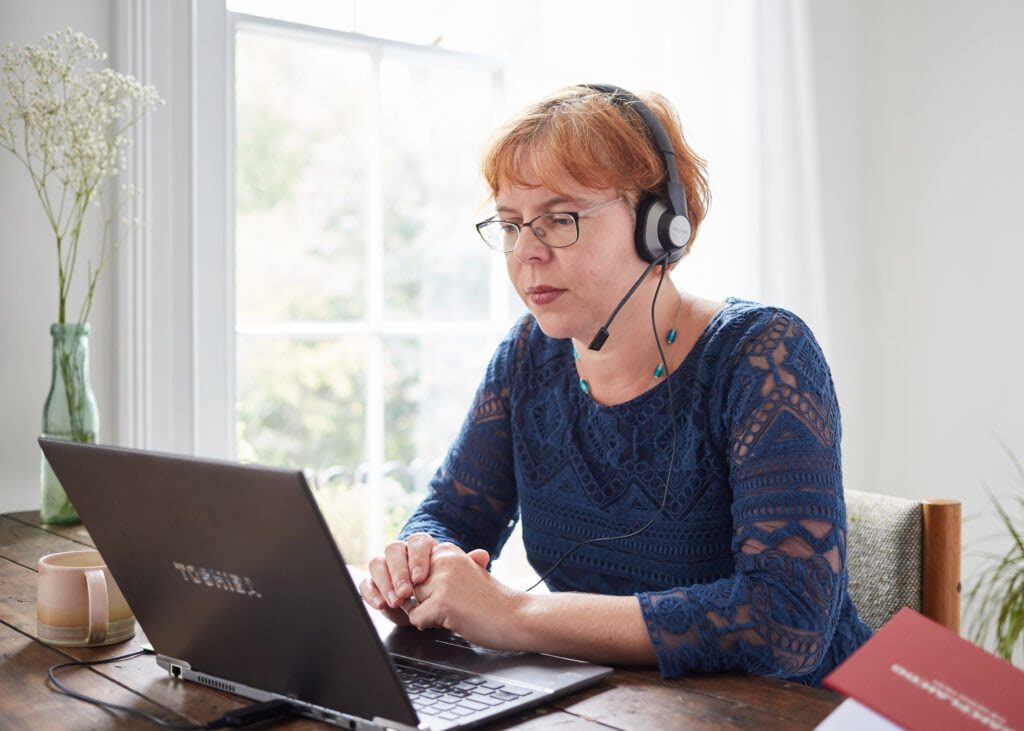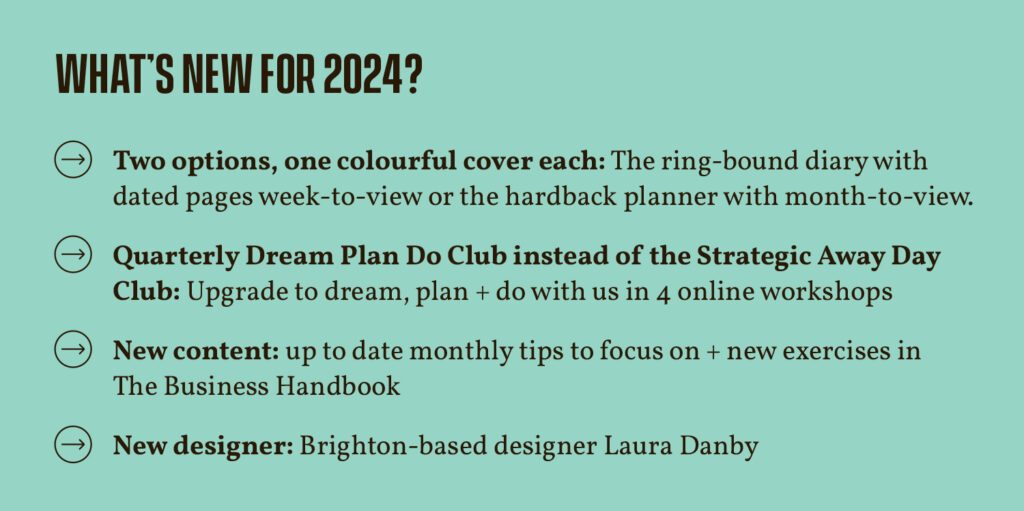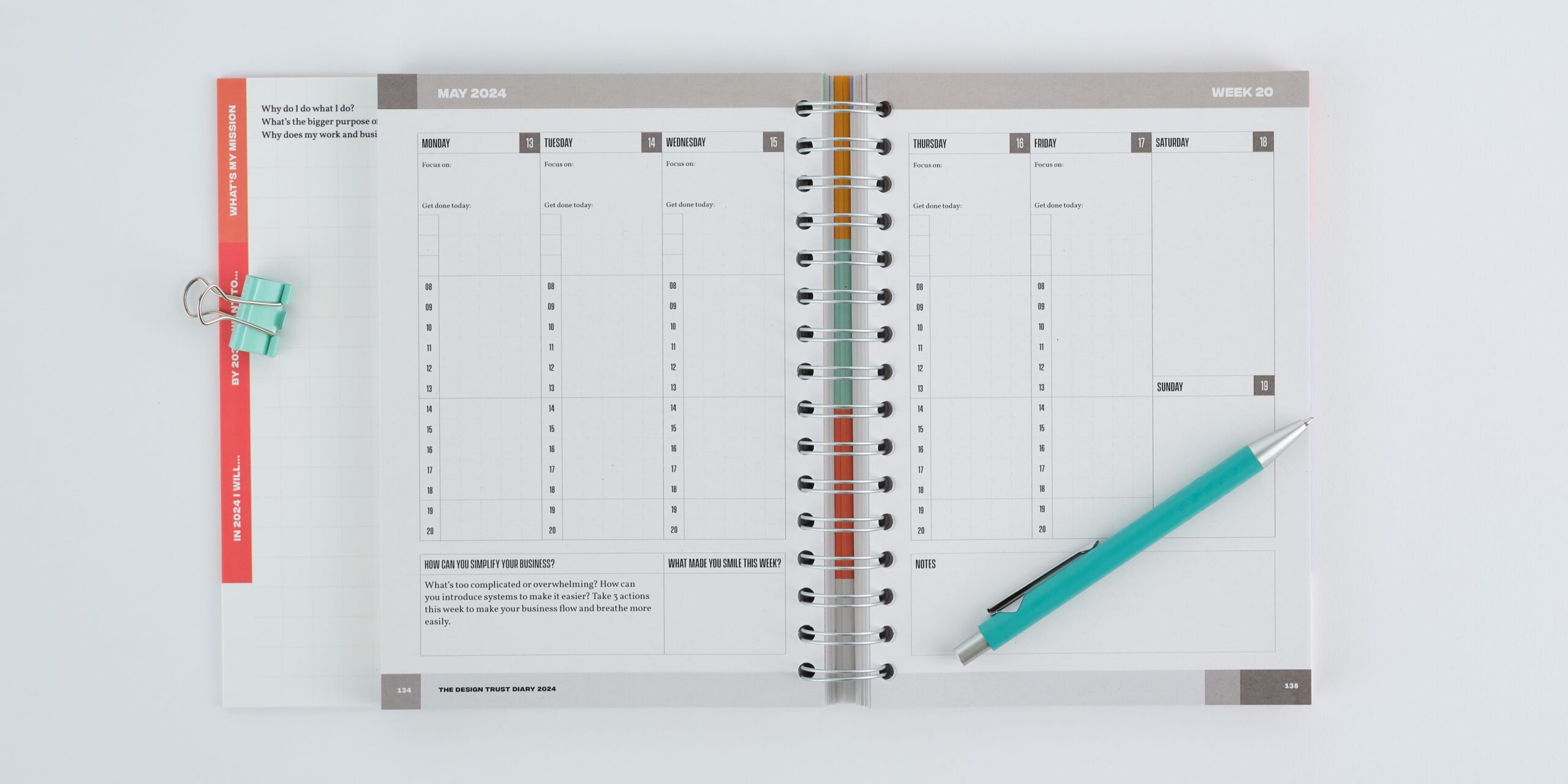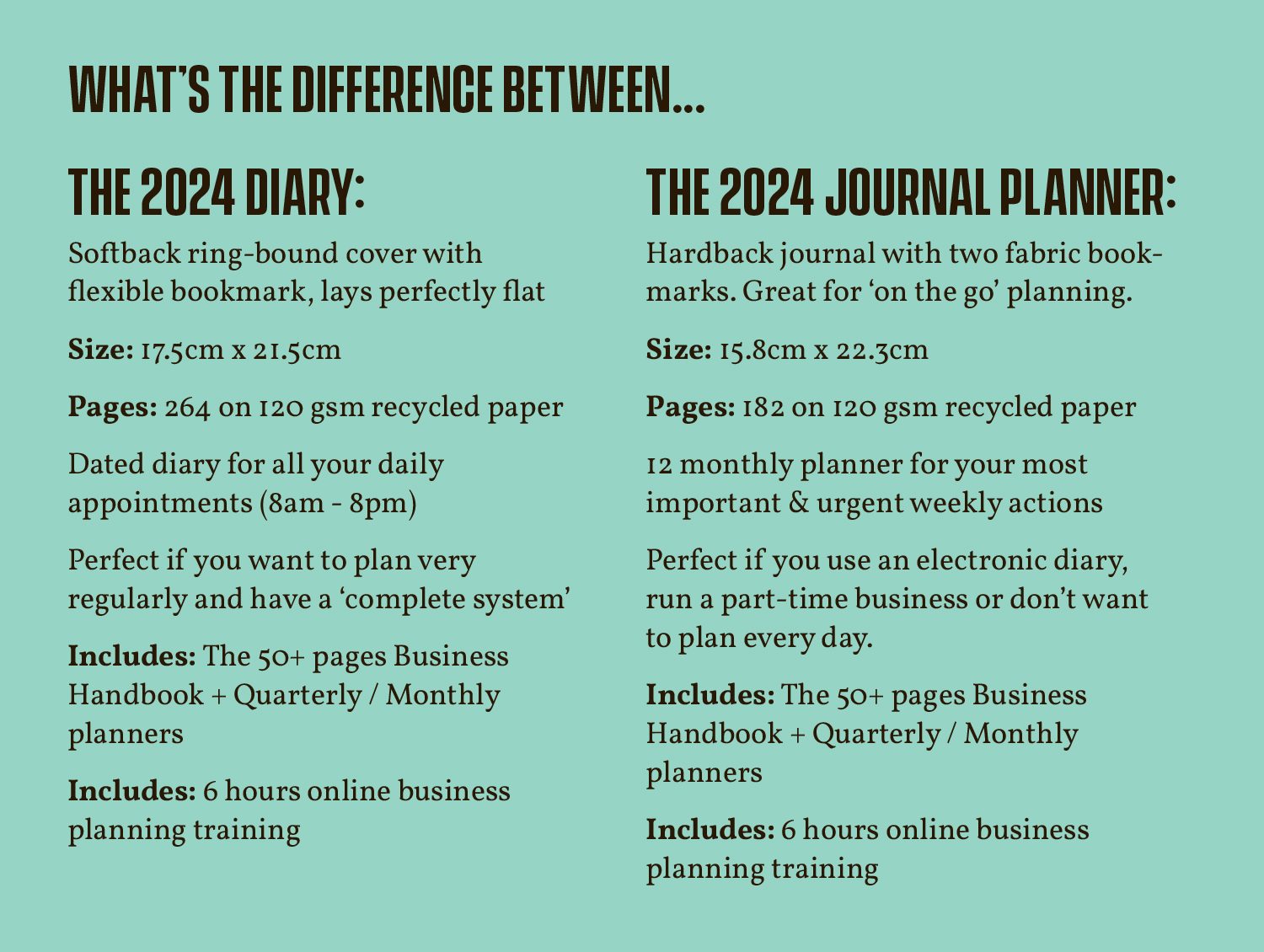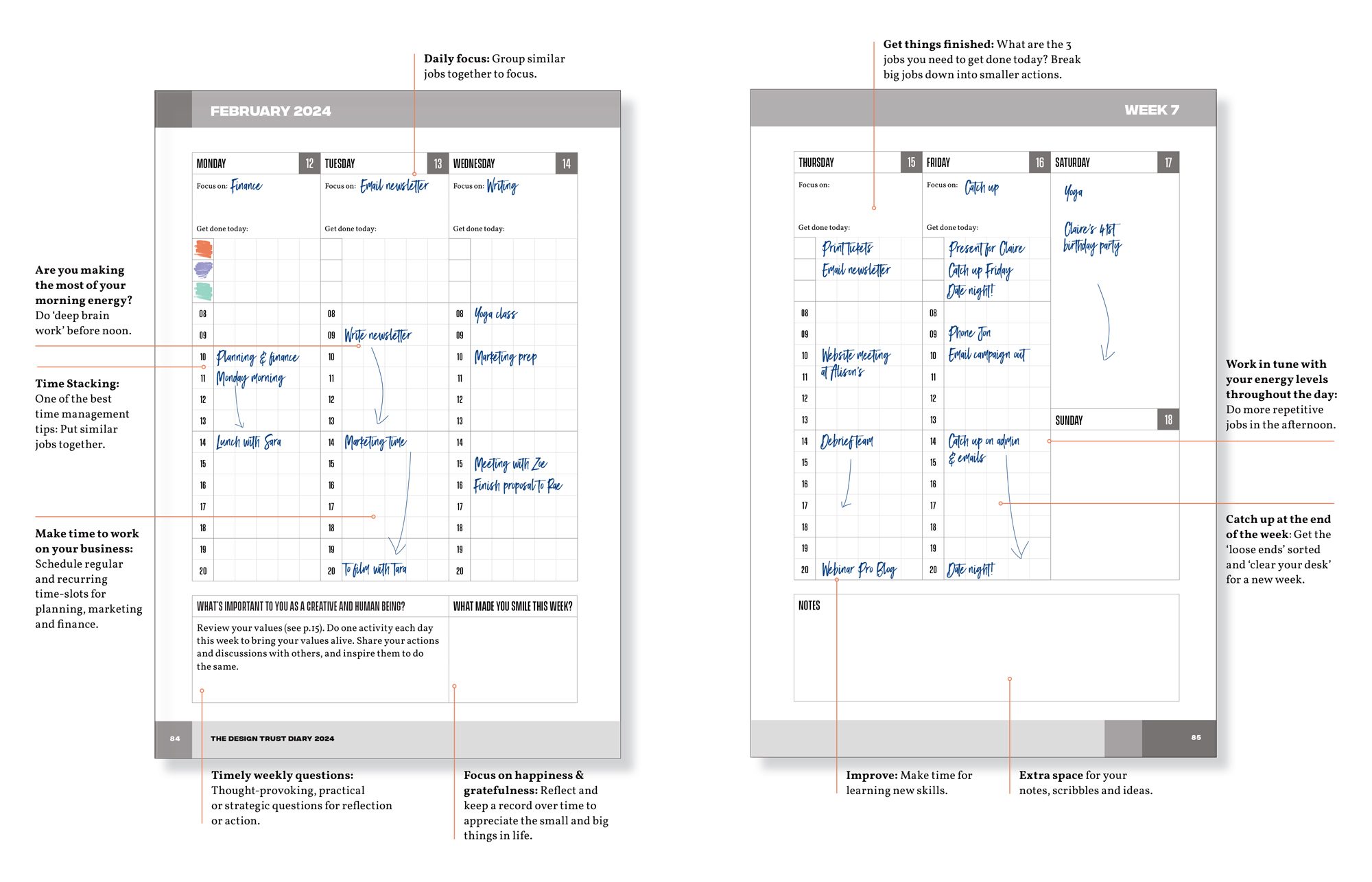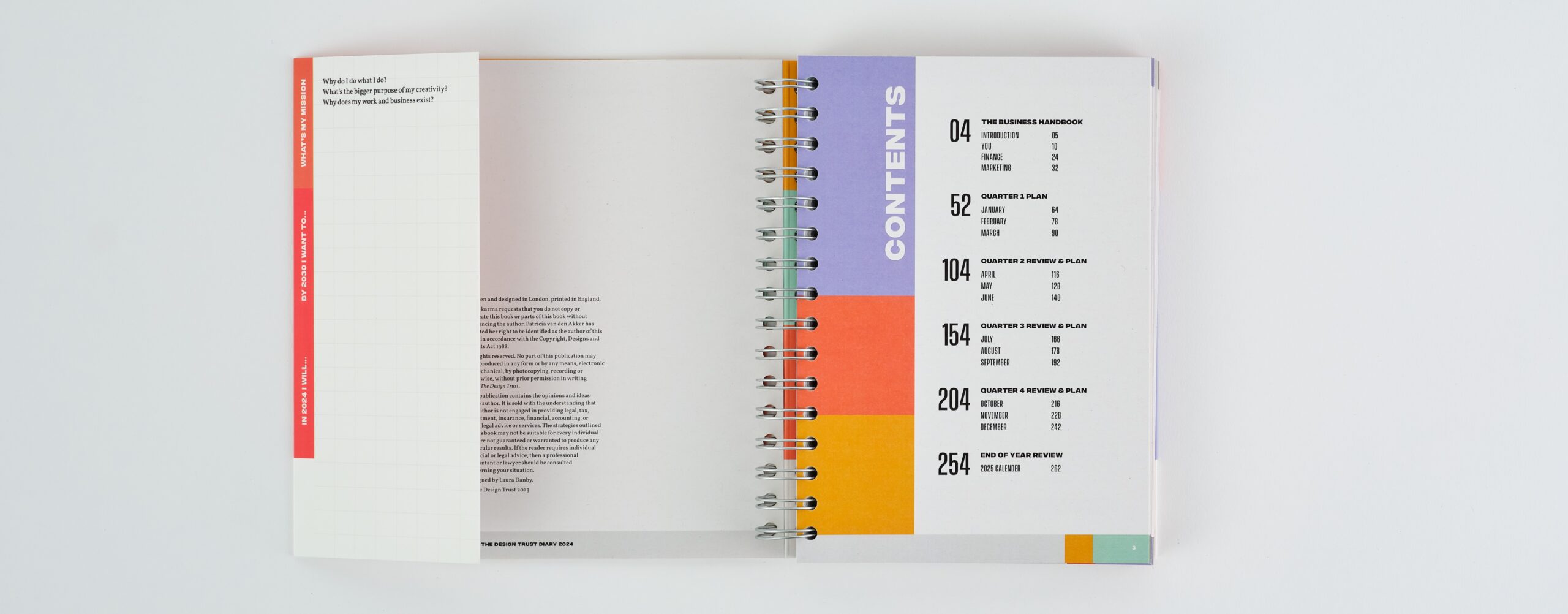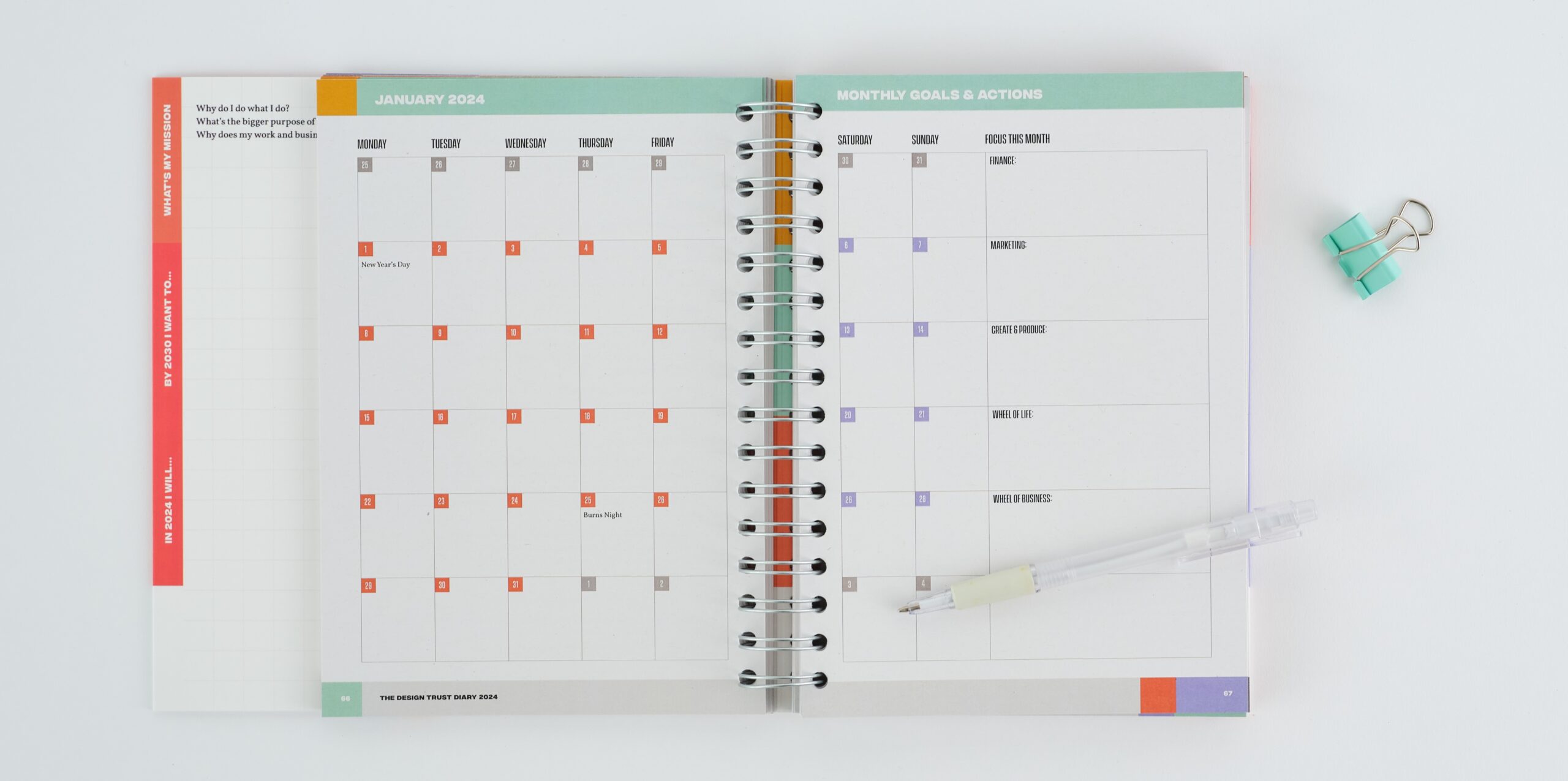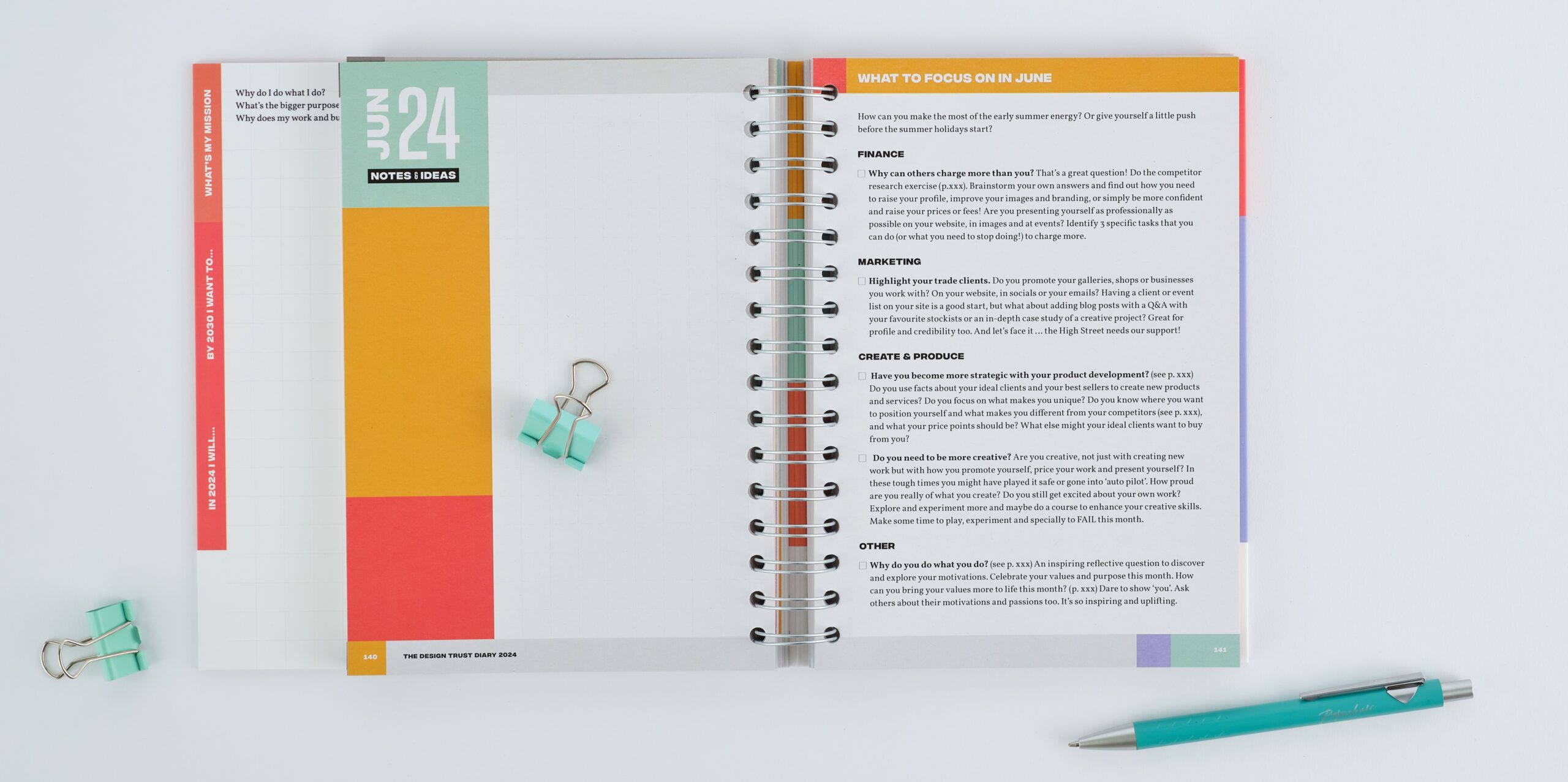Do you find it difficult to come up with ideas on what to write about in your newsletter, blog or social media? Are you worried about boring your readers?
Staying in touch regularly with your potential clients is crucial if you want to get more sales – especially online. Your regular useful emails will build up trust and your profile.
Emails are a particularly useful marketing tool to drive more traffic to your website, to build your relationship with potential and existing clients, and to build your credibility and profile with them. Blog posts on the other hand, are great to publish more relevant content on your website and make it more specialist – a good starting point to increase your ranking with the search engines.
Here are 24 creative and useful ideas for you to write about that your audience will love to read about:
1. Why did you start your creative business?
Was there a special reason you became your own boss? Who or what inspired you? Is there a bigger purpose behind your creative business? Your audience will love to read more about your personal motivations and life, and writing about the origin of your creative business is a great starting point.
This would make an interesting introductory read in a automated follow up email (or auto responder) when people sign up for your mailing list.
2. What’s your creative business name?
Why did you give your business this name? What’s the story behind the name you have chosen?
Naming your business is a bit like naming your baby, and readers love to hear more!
Again this can be a great ‘general’ topic or when people have recently signed up to your email list.
3. Where do you live and work?
Are you in the middle of Hackney or Shoreditch, or in the middle of nowhere in Wales? How does your studio or location influence your creative work? People find it fascinating to see how your studio looks like, and to see pictures of you at work, or from your surroundings. I have worked with many Scottish creatives and it’s wonderful to see how the Highlands or islands influence their use of colour, texture and materials.
Write an email or extended blog post about where you live and work, and how that specifically impacts on your work and business.
People love to see the provenance of your work and where you create. They are often jealous of the life style of the creative! (oh, if only they would know!)
Let’s face it … who doesn’t love to have a little peek into other people’s lives!
These behind-the-scenes images and films are very popular on Instagram too. And you can add this to your website’s ‘About Me’ page too. We love it how glass artists Stephen Gillies and Kate Jones of Gillies Jones share pictures and details of their workshop and surroundings in the North York Moors National Park, and how their environment influences them daily.
4. Who are your role models or heroes?
Who truly inspires you? Are they other creatives in your field, or are they long gone poets, bio-scientists or world peace campaigners? Or was it your grandma who taught you how to knit or who stood up for herself and said it as it was?
Do a blog post or email with your selection of five role models. What is it about them that you particularly admire? How do they compare with each other? And what are the lessons you learnt from each of them?
Or maybe you could do a Q&A or short interview with your role models and publish that on your blog?
Writing about your inspirations makes for great content for your readers, and can give a great insight into your inspirations and values too. And you can spice up your About Me page too with details of your inspirations. We love it how pet artist Jo Scott has created a really memorable ‘About Me’ page that way.
5. Review an exhibition, event or book.
Do you want to share your inspirations, passions and values a bit more? Want to add a bit more creative content to your blog or emails?
- Write a book review of a book and share that with your readers. Will it be a technical, creative, historical or business book? How can you share your own inspiration, values and knowledge with your readers?
- Or create a purely photo-based blog post about an exhibition that you found inspiring. Or share pictures of city visit or quiet walk. Especially useful if you don’t like writing!
- Or if you have exhibited at a craft fair or trade show then writing a blog post about the event can be a great follow up email after the show.
These type of review blogs can be great if you want to become an expert in your field, or if you want to start curating or writing more too.
We regularly review books on The Design Trust blog that are relevant. You can find our favourite creative business planning books here and our selected time management books here.
6. Share your creative process.
Do you find it difficult to write anything at all? Then do think about using video, images or podcasts even.
Short videos of you at work are extremely popular on Instagram and Facebook.
Keep it short – up to 3 minutes is perfect.
And no, you don’t have to show everything and give all your technical secrets away! But it is surprising that many potential clients might not realise what is actually involved in creating your lovely handmade products.
If they don’t understand the knowledge and skills required to create beautiful, high-end craft products then how can they value what you do?
7. Show designs and products in process.
Share with your potential clients how you get inspired. How you sketch out your ideas. How you create prototype‘s or select the right materials. Or get your colours or glazes ‘just’ right.
When you are getting ready for a launch of a new collection then create a series of emails or blog posts that *slowly* reveals your next collection step-by-step – from sharing your initial ideas 6 weeks before the launch, to revealing some prototypes and the collection name a month in advance, to the final result and launching your collection.
8. Share your passions, quirks and geekiness.
People buy from people … especially when it comes to creative products and services.
Share with your audience what you are really passionate about. Show your personality. Dare to be a little different and stand out!
What excites you about your specific craft, your themes, your materials or techniques?
Did you choose your craft? Or did your craft choose you?
What is it about ceramics that you really love? Is it the combination of science and art? The possibilities of glazes? The unpredictability of the process – every single time you open that kiln door you aren’t sure which ones have survived? Or that human beings have been making pots for over 10,000 years?
Do you spend hours making your work? Relentlessly? Bickering away?
What is your work really about? What stories do you want to tell? What’s the bigger purpose of the creative work you do? What do you want to change in the world through your work and your way of seeing?
People love to buy from passionate people. Share your passion widely and passionately. Show that you care. Create an impact. We need more enthusiastic creatives like that in the world!
9. Share in-depth case studies of your commissions
This is one of my favourites! And it’s one of the most effective marketing tools you can use. Especially if you write up detailed case studies, and then promote them regularly via social media and your email marketing too.
Really tell the story of how you work with your commissioners – from start to finish. Set the scene and talk about a specific person, couple of business that commissioned you. What was the design brief? Then talk your reader through all the different stages. Your meetings or phone calls. The changes you made as you went along. Some of the challenging parts even. And finish with showing the end result and some quotes from your commissioners. Not just about the final piece, but about the process and what they liked about working with you.
Add images of some of your sketches or prototypes.
A detailed case study can give great insight into HOW you work. What’s actually involved. How friendly or accommodating you are. Your specialist expertise. Your creative process.
Plus it’s a great way to share quotes and testimonials from happy clients. So much easier to get other people to blog your trumpet, then doing this yourself!
Writing up detailed case studies is great for commissions, but also for workshops or if you provide design services to interior designers or other business clients.
A good case study can give a unique insight into HOW you work, is more memorable as a story, and builds trust along the way.
10. Introduce your stockists and retailers
Are you promoting your wholesalers? Adding a simple stockist list to your website is a good start, but you can take this even further by introducing some of your favourite stockists or retailers in an extended blog post or email. Add several images with the display of your products. Talk about the gallery or shop owners, and why you are proud to be working with them.
No. you don’t have to be a slime ball to pull this one off … but let’s face it – small independent retailers are finding it really tough right now, so a bit of extra TLC from their suppliers (i.e. you!) will be much appreciated! PLUS some of your clients might not want to wait till your next event or shop online because they want to see your work in the flash.
And if you are working with great shops and galleries then this is a great booster for your credibility and profile too!
11. What is special or different about you?
Let’s face it … it’s a pretty competitive market out there! So sometimes you need to spell it out a bit clearer to your potential clients: What makes you different or special? Because niche is good!
So, what is special about you, your team, your business, or your products?
Do you use only ethical materials or are you an extremely good thrower?
One of my clients used an oak tree that was 200 years old recently. And he forgot to mention that in any of his communications! That’s such a shame because ‘little’ details like that make a huge difference to the perception of what you do, the care for your materials, the longevity and inherent history you create, and how people will remember you.
12. Ask your client’s questions
Get your clients more involved with your business by asking them questions. It’s an excellent way to really get to know who your email subscribers are!
Although I personally think you have to be careful with asking a broad group for feedback, it can be interesting and very useful if you do this in a more targeted way, aimed at your ideal clients rather than your best friends. The Design Trust regularly does surveys for example around specific challenges that our creative business clients face. Their answers often gives us ideas for new online courses, workshops, blog posts or interviews for our Business Club.
So instead of asking your audience to vote on the possible new colourways or your new logo I would instead get them involved at an earlier stage. For example ask them about some of the challenges or issues for your kind of products or services, ask them which craft events or trade shows they attend or which specific blogs or magazines they read. Or what their specific questions or worries are about purchasing your work or commissioning you. This works especially well if your products are rare or expensive purchases as potential clients will have more questions and need more reassurance.
What is stopping your ideal clients to buy from you? If you can find the answer to that then it’s much more likely you are going to get sales.
You can ask them by email and respond directly to you, or via comments on social media or in blog posts. Or you can include a short survey that you create in Google Drive to guarantee confidentiality.
13. Answer your client’s questions
This is one of the most useful and successful ways to generate ideas for what to write about for blog posts and emails!
Why? If you write a blog post with their question and your answer then you might increase your SEO. Use your client’s question as the title of your blog post, use the key words in the URL at the top, and repeat it a few times in your post. As other potential clients might have the same question and put it in their search engine the chances of them reaching your website will increased.
Plus if you are helpful towards your future clients and answer their questions then that makes you a much more trusted creative business.
One of the biggest reasons why The Design Trust website gets more than 50,000 visitors each month is because we answer many questions for our creative business clients through this Q&A format. Many other creatives had similar questions and found us that way on Google. Once your blog becomes more established around certain consistent key terms then the traffic to your site will increase exponentially.
14. What’s important to you?
Share your values and bigger vision and purpose with your audience.
Why? It’s very likely that your ideal clients are interested in the same values as you are. For example if you are interested in eco-friendly fashion then it’s likely that your clients are too.
Write about your favourite topics from different angles as this will increase the likelihood that you will reach the right people. For example think about including last minute gift ideas for eco-friendly mums for Mother’s Day, and insight into your supply chain and manufacturing partners, or recommend other eco-friendly small businesses that are related to what you do for example shoe companies or eco-friendly jewellers.
By writing about your key values in different ways you will get spotted easier, and your SEO for that key word will go up too.
A great example of how important values can be for a creative business is furniture designer Sebastian Cox, whose blog posts are very related to his opinions around sustainability.
15. Share useful tips and recommendations
How can you become less boring and salesy and more useful for your readers? Share some practical tips or resources that you know of that might be super useful to them! It will increase their trust in you, plus it makes you more knowledgeable too.
For example:
- If you design and sell contemporary engagement and wedding rings then you might like to recommend other small independent creative businesses for contemporary brides, such as letterpress designers, make up artist, local photographers, wedding dress designers, and florists.
- Does your silver jewellery need a bit of after care to avoid getting black? Then send a follow up email after their purchase on how to look after their purchase.
- Do you own a small independent shop or gallery? Then share top tips on your blogs on where to find nice local restaurants or boutique hotels. They might even return the favour!
The Design Trust blogs and emails are full of recommendations! You can check out our 43 favourite online places to sell your crafts & design here.
16. Give styling tips on how to wear your work
People find it often difficult to imagine how your jewellery would look on them, or if your prints would look good on their wall. So … show them!
Especially Pinterest is full of styling tips and advice on how to wear statement jewellery or a scarf, how to hang pictures on a wall, or create beautiful ceramic collection displays. Also think here about broader challenges that are indirectly related to what you do e.g. about how to dress a Christmas tree or table, or how to wrap a present beautifully.
American jeweller Megan Auman has various styling boards on her very popular Pinterest site. Very cleverly showing her pieces off and how they can be worn in different situations.
This is another great image-based solution if you don’t like writing! A great opportunity to add some different images on to your Instagram or Pinterest account.
17. Make the most of events
One of the most common mistakes I see is that creatives only send out one email to promote an event.
And often they will send it too late.
Creative selling events are one of the best opportunities to sell your gorgeous creative products, but also a great opportunity to promote yourself and your brand – even to people who might never be able to visit!
While preparing for a craft fair or tradeshow it’s crucial that you share not just one email or a few social media posts at the last moment. Events are one of the best opportunities to stay in touch with your audience in a friendly, non salesy way. Not just for the people who might be able to attend, but also to raise your profile and credibility to all your contacts.
I advise my clients to create a series of emails in the run-up to a show, from:
- announcing that you are doing a particular show (6 weeks before)
- to talking about your new collection that you will be launching at the show (4 weeks before)
- to why you created this collection and its name (3 weeks before)
- to asking if anybody needs a VIP or special discount ticket (2 weeks before)
- to getting ready for the show with packing up and boxes sticking out of your van (2 days before)
- to the chaos of setting up your stand (1 day before)
- and the final result: the launch of your new collection and your stand display. (on launch day)
Also don’t forget to email or share on social media after the show with a follow-up of what your bestseller were, and enable them to download a price list or wholesale catalogue. Just in case they missed you. This isn’t spam, this is being friendly and useful to busy people.
The reality is that if you only send one email that it’s very likely that your clients will miss it. Because the reality is that the vast majority of your clients won’t open their email. By telling a story it’s more likely that they will open your email, but also by telling a story they will become much more engaged and involved in your business journey.
18. Make it more personal for trade buyers
If you want to increase your wholesale orders then individual and personalised emails work best. Don’t send a generic email that you also send to consumers.
Handpick the stockists and retailers you want to work with and research them instead.
Make sure that there is a good fit, rather than sending generic emails to ‘everybody’. It’s annoying and really doesn’t show that you have taken care of understanding them.
And if you want social media to work for trade clients then it’s best that you don’t copy them in all the time.
And don’t just hope that they will follow you in return if you follow them! Sorry, you need to do a bit more work then that. Stop broadcasting so much, and instead spend much more time on your trade client’s social media timelines and engage with them there. Ask questions. Give detailed comments and compliments. Yes: Make it social media!
19. Highlight a ‘Product of the Week’
Shine a light on a specific product or service that week or month.
Why did you design that product?
What was the inspiration behind it?
What name did you give it?
What’s special about it?
Make this post ideally relevant to the time of year for example a nice cosy woollen blanket post in October. Or gift ideas for teachers in July.
Include a gorgeous image at the top of your email to attract attention straight away.
And maybe you can do something special e.g. offer free postage and packaging on that product that week or combine it with another producct to create a special Set of the Month.
This is a simple but effective marketing approach to promote a product that you have got quiet a bit of stock of, without putting it too bluntly in the sale!
20. Do a timely post or email
Make your emails and blog posts more relevant and newsworthy!
Become more aware of WHEN your readers are most likely to buy. What are their reasons to buy from you?
Of course this is useful around Christmas and share some last minute gift ideas for busy mums or bicycle lovers.
But time to get a bit more creative too!
What are the key gift giving moments for your clients? Think about different religions.
What about ‘Back To School’ or ‘Hurray Spring is Here’.
Or join in with popular TV shows, music or the news.
What about ‘Love a Tree Day’ (16 May), National Stationery Week (starts Tuesday after Easter) or World Chocolate Day (yummm 7 July). We don’t know either who makes these days up … but you can find some of them on The Design Trust annual wall planner!
Think about how your clients might feel right now. For example in January people want to start new habits or courses, and this might be a great time to launch planners or workshops. In March people might like to do a little spring clean and get some new cushions or prints on the wall. When it gets colder they will be looking for scarfs, cosy blankets, or candles. Add a little happiness in their timeline or inbox that connects to how they want to feel.
Make sure that your subject line is catchy, interesting or useful to your potential clients.
Don’t call your newsletter a newsletter … as let’s face it … nobody wants to read that!
21. Be useful
Who wants to receive emails that are boring, spammy and overly salesy? Nobody!
Who wants to read boring blog posts? Nobody!
So, simple: start to write blog posts and emails that are useful to your ideal clients!
Give them practical advice and last-minute Christmas wrapping ideas or gift suggestions for difficult people.
Talk about the Pantone Colour of the Year and share trend advice about the latest fashion or interior colours for the next season.
Promote other creative businesses, resources or books you like. About half of our social media posts are about promoting other organisations, opportunities, events that are relevant to our clients. Less than 10% of our social media posts are about selling our online courses, workshops or books. And if you want to sell then keep it simple and include a link directly to the relevant page. Yes, social media is a great tool to drive traffic to your site!
22. Invite others to write for you!
Don’t like writing? A really good way around this is to ask guest contributors for your blog posts.
Or you can interview others you find interesting and that you know your readers would love to hear about!
Or create a so called ‘wrap up blog post’ where you ask 3 – 5 contributors to respond to the same question or challenge. These blog post can be very popular and easy to create. Check out this blog post where three creatives shared how they use email marketing in their creative businesses as an example.
Be clear in what you want the focus to be of these guest blog posts, and avoid overly spammy and salesy posts. Also ensure that the content is original, as most search engines will punish you into lower rankings if your content has been duplicated.
And if your guest writer is well connected or known and promotes their blog post to their audience then you will get more and better traffic too!
Who would you approach to write for you? And how can you convince them that that’s a good idea for them too?
23. Take part in a social media challenge
Do you need even more ideas on what to write about in your emails, blog posts or on social media? Then take in any of the popular social media challenges that are doing the rounds regularly.
One of the most popular ones is Joanne Hawker’s #marchmeetthemaker which takes place in March. Most of these challenges last a week or a month, and each day there is another topic for you to share.
Be careful that they won’t take up hours to construct. And some of these social media challenges attract mostly other creatives, and therefore might not do anything for your sales. But they can be a great opportunity to meet other creatives and become part of a bigger creative network!
24. Less writing. More images.
Don’t like writing? Still don’t know what to write about?
Let’s be honest … you are probably more a visual artists than a writer.
Make it more visual. Focus on great images in your emails. A great image says it often far better than a long email.
Keep it simple.
Because people don’t read that much any more these days.
Did you like our 24 creative ideas on what to write about for your next email newsletter, blog post or on social media? Did we give you any ideas? Or have we missed a topic that worked really well for you? We would love to hear from you in the comments box below. And if you found this blog post useful then do share it with others on social media too. It’s really easy to copy and spread the love. Thanks.
Want even more email newsletter ideas? Here are our own favourite creative newsletters to inspire you!
